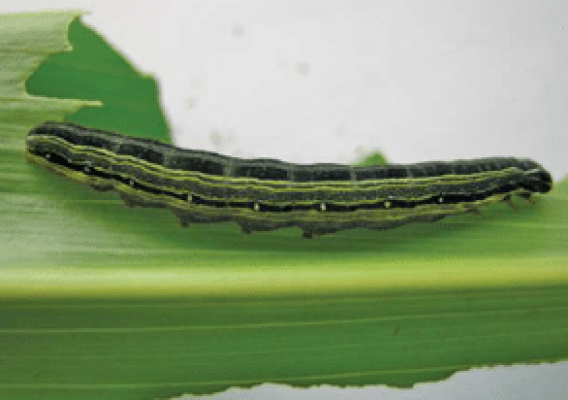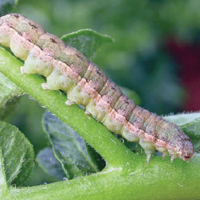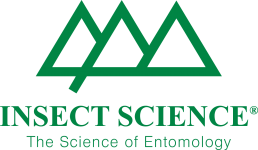Host plants
S. exempta feeds exclusively on poaceous plants, including maize, sorghum, small grains, sugarcane and turf gasses, to name but a few. In contrast, Spodoptera exigua, in addition to feeding on poaceous plants, also causes severe damage to broad-leaf crops such as vegetables, as well as Amaranthus, cotton, groundnut, lucerne and tobacco.
Damage
Both species sporadically attack maize. Spodoptera exempta more commonly invades pastures and fodder crops, while S. exigua usually attacks various dicotyledonous vegetable crops. At very low infestation levels, leaf damage to young maize plants caused by larvae of S. exigua resembles that of stem borers. Larvae eat small rectangular “windows” on the young leaves. These symptoms result from larval feeding on the upper surface of the leaf, leaving the lower surface intact. Larger larvae consume large parts of leaves.
Spodoptera exempta larvae are known to migrate into maize fields from surrounding vegetation once that food source is depleted. Larvae consume whole leaves, leaving only leaf veins. If ears are present in plants, the silks and tips of ears are also damaged. Solitary army worm larvae often feed on maize seedlings and cause damage resembling that of the chilo borer. As a result, maize plantings are sometimes unnecessarily treated with insecticide, since the damage caused by solitary army worms is negligible.
Life history
Infestation of the African army worm characteristically occurs in cycles of approximately ten years, with an epidemic year often being followed by a year without infestations. Larvae occur in swarms, migrating together as food sources become depleted.
Outbreaks of the lesser army worm do not occur in a cyclic pattern, although outbreaks may coincide with those of the African army worm. Since the larvae occasionally also occurs in swarms, they may be confused with those of the African army worm. An important aspect of army worm ecology is the occurrence of the so-called phase phenomenon (commonly associated with locusts). During years when the army worms appear to be absent, the larvae assume a different appearance and live solitary, rather than in swarms. The life cycle is extremely short, with only ten days needed from hatching to pupation. The distance covered by one generation of migrating larvae of S. exempta seldom exceeds 1000 m, and new infestations originate from moth movement rather than from previous larval infestations. Larvae pupate in the soil and there are several generations in one season.
Management
Several contact insecticides are registered for the control of both army worm species on various crops. The insecticidal characteristic of genetically modified Bt maize provides effective control of S. exempta, and would most likely also be effective against S. exigua.






